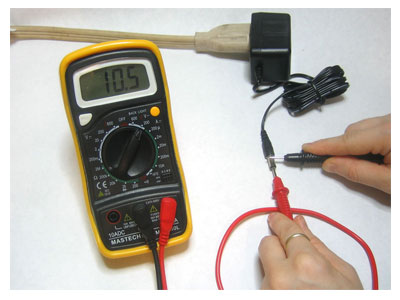Key Takeaway
To repair an SMPS power supply, follow these steps:
First, ensure the power is off and unplugged. Open the casing and visually inspect for any obvious damage, like burnt components or bulging capacitors. Next, use a multimeter to check for continuity and proper voltage levels. Replace any faulty components, such as capacitors, resistors, or fuses. Reassemble the SMPS and test it by plugging it in and turning it on. If it still doesn’t work, it might be a more complex issue requiring professional repair. Always prioritize safety and consult a professional if unsure.
Common Issues and Symptoms
Switch Mode Power Supplies (SMPS) are vital in industrial applications, but they can fail. Understanding the common issues can help in quick diagnostics. Often, SMPS problems manifest as no output power, intermittent operation, or overheating.
Symptoms like burning smells, unusual noises, or visual damage on components like capacitors and resistors are clear indicators of failure. Voltage fluctuations and frequent tripping are also common. Newly joined engineers must be vigilant for these signs. By recognizing these symptoms early, downtime can be minimized, and repairs can be executed more efficiently.

Diagnostic Tools
To effectively repair a Switch Mode Power Supply (SMPS), having the right diagnostic tools is crucial. A digital multimeter is indispensable for measuring voltages and checking continuity. This tool allows you to quickly identify if there is a broken circuit or if the voltage levels are off. An oscilloscope is another essential tool; it helps visualize waveforms and detect anomalies in the power supply’s operation, making it easier to pinpoint issues like ripple or noise in the output signal.
Isolation transformers are important for safety when working on high voltage circuits. These transformers protect you from electric shocks by isolating the circuit you’re working on from the main power source. Additionally, a soldering iron and DE soldering pump are needed for component replacement. The soldering iron allows you to remove and replace faulty components, while the DE soldering pump helps clean up the excess solder. For checking capacitors, an ESR (Equivalent Series Resistance) meter is useful. This meter can quickly tell you if a capacitor is failing by measuring its internal resistance. Familiarizing yourself with these tools will enable you to diagnose and fix issues accurately and safely.
Step-by-Step Repair Guide
Repairing an SMPS involves a systematic approach to ensure safety and efficiency. First, disconnect the power and discharge capacitors to avoid electric shocks, as capacitors can hold a dangerous charge even after the power is off. Properly discharging them is essential to prevent injury. Inspect the board visually for any burnt components, swollen capacitors, or loose connections. A thorough visual inspection can often reveal obvious issues that need immediate attention.
Next, use a multimeter to check for continuity and measure voltages at various test points. This will help you identify which components are faulty. Carefully test diodes, transistors, and ICs to pinpoint any defective parts. Once identified, replace these components with new, reliable ones. Reassemble the unit with care, ensuring all connections are secure and properly seated. It’s crucial to double-check your work at this stage to avoid any overlooked issues.
After reassembly, power up the SMPS cautiously, observing for any signs of trouble such as unusual noises, smoke, or erratic behavior. Finally, test the output voltages to ensure they are within the specified range. Following this step-by-step guide meticulously will ensure a successful repair, minimizing the risk of missing a critical issue and restoring the SMPS to proper working condition.
Safety Considerations
Safety is paramount when repairing SMPS units. Always disconnect the power supply before starting any repair work to prevent electric shocks. Use an isolation transformer to protect yourself from high voltage circuits, which is crucial for safely working on power supplies without the risk of electrical injury. Discharge all capacitors, as they can hold a charge even after the power is turned off, to eliminate any lingering danger.
Wear protective gear such as gloves and safety goggles to shield yourself from potential hazards. Working in a well-ventilated area is essential to avoid inhaling any harmful fumes from soldering. Additionally, be especially cautious of high voltage sections in the SMPS, as they pose significant risks if not handled correctly. These sections can cause severe injuries if proper precautions are not taken.
Prioritizing safety will prevent accidents and ensure a secure working environment. By following these safety practices, you minimize the risk of electrical shocks and other injuries. Ensuring these safety measures helps create a safer workspace for everyone involved in the repair process. Always prioritize safety to prevent accidents and maintain a secure working environment, safeguarding both yourself and your colleagues.
Tips for Long-Term Maintenance
Maintaining an SMPS properly can significantly extend its lifespan. Regularly inspect and clean the unit to prevent dust buildup, which can cause overheating and other issues. Dust can block ventilation and cause components to overheat, leading to premature failure. Ensure adequate ventilation around the power supply to keep it cool. Overheating is a common cause of failure in SMPS units, so keeping them cool is essential.
Check and tighten any loose connections periodically, as loose connections can lead to arcing and other electrical issues that can damage the unit. Replace aging capacitors before they fail completely, as capacitors degrade over time and can cause the power supply to malfunction if they fail. Using high-quality components during repairs ensures reliability and longevity. Implementing these maintenance tips will keep SMPS units in optimal working condition for a longer period. By following these guidelines, you can ensure that your SMPS units operate efficiently and have a longer lifespan, avoiding frequent repairs and downtime.
Conclusion
Repairing an SMPS power supply requires a clear understanding of common issues, the right diagnostic tools, and a methodical approach to repairs. Safety should always be the top priority, and regular maintenance can prevent many common failures. By following these guidelines, newly joined engineers can become proficient in repairing SMPS, ensuring minimal downtime and maintaining efficiency in industrial applications.
